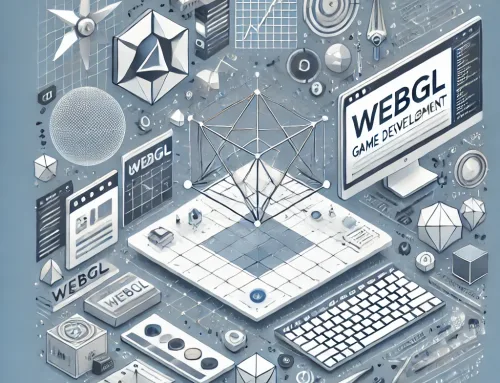Technologie bringt Mass Customization in die heimische Fertigung.
Verbraucher lieben es, Produkte an ihre eigenen Bedürfnisse anpassen zu können und die Mass Customization macht es möglich, dass einheimische Hersteller eine wachsende Auswahl an kundenspezifischen Optionen anbieten können. Zum Beispiel stört der kalifornische Autohersteller Tesla den traditionellen Autohandel, indem er digitale Technologien einsetzt, um Autolose durch einen virtuellen, maßgeschneiderten Ansatz zu ersetzen.
Käufer können in ein Geschäft mit nur zwei Fahrzeugen auf der Verkaufsfläche gehen und über ein Touchscreen-Display die Funktion ihres eigenen, maßgeschneiderten Fahrzeugs auswählen. Der Kauf kann dann vor Ort oder zu Hause über die Website von Tesla abgewickelt werden.
In dem folgenden Video wird Mass Customization näher erläutert:
Mass Customization hat enorme Auswirkungen auf die Art und Weise, wie Produkte hergestellt und verkauft werden. In diesem Beitrag werden wir einige neue Technologien vorstellen, die die Mass Customization Revolution vorantreiben, wie Unternehmen Sie ausnutzen und wie sie das Reshoring der inländischen Produktion fördern.
3D Visualisierungen im Netz.
Viele große und kleine Unternehmen setzen bei ihrer Mass Customization Strategie zunehmend auf 3D Visualisierungen. Auf dem Vormarsch sind vor allem 3D Konfiguratoren, mit denen Anwender die jeweiligen Produkte an ihre eigenen Bedürfnisse anpassen können.
3D Konfiguratoren werden nicht nur Privatkunden angeboten, sondern auch zunehmend häufiger im B2B-Bereich genutzt. Ein gutes Beispiel ist das deutsche Unternehmen Wanzl Metallwarenfabrik GmbH mit dem Geschäftsbereich individueller Ladenbau. Hier können Ladengeschäfte wie Discounter ihre eigenen Einkaufswagen online in Echtzeit konfigurieren. Testen Sie es selber auf der folgenden Seite aus.
Neben der Industrie finden sich 3D Konfiguratoren zunehmend auch im Schmuck-, Brillen- oder Automobilbereich.
3D-Scanning und Printing.
Ein Bericht von McKinsey und Company hat sieben Technologien in zwei Schlüsselbereichen identifiziert, die derzeit die Mass Customization vorantreiben. Eine davon ist das 3D-Scannen und -Modellieren. Diese Technologie verwendet Scanner, um dreidimensionale Informationen von physischen Objekten zu sammeln und virtuelle 3D-Modelle zu erstellen, die für die Herstellung kundenspezifischer Produkte verwendet werden können.
Exemplarisch ist das unter Armour verwendete 3D-Scanning zu nennen, um maßgeschneiderte Schuhe für Michael Phelpsthat zu entwerfen, die exakt an seine Füße angepasst waren. Nike benutzte auch 3D-Scanning, um benutzerdefinierte Spikes für den Sprinter Shelly-Ann Fraser-Pryce herzustellen. In anderen Fertigungsbereichen ermöglicht das 3D-Scannen mit hochpräzisen Laserscannern eine exzellente Qualitätskontrolle von Teilen in der Automobil- und Luftfahrtindustrie. Der Einsatz von 3D-Scanning ergänzt den 3D-Druck, eine weitere Technologie, die die Mass Customization fördert. Während das 3D-Scannen die Erstellung kundenspezifischer Designs erleichtert, macht das 3D-Drucken die Herstellung kundenspezifischer Produkte effizient und kostengünstig. Apple Rubber verwendet beispielsweise den 3D-Druck, um maßgeschneiderte O-Ringe für Kunden aus einer Vielzahl von Branchen zu produzieren.
Andere 3D-Druckanwendungen sind z.B. Bekleidung, Autos oder Häuser. Durch den 3D-Druck konnte Caterpillar beispielsweise bei einigen seiner Produktionsprojekte bis zu 90 Prozent einsparen. Dies kommt zusätzlich zu den Einsparungen, die das Unternehmen durch die Verlagerung seiner Produktionsanlagen von China nach Victoria (Texas) erzielt hat, wo das Unternehmen 2012 eine hochmoderne Anlage eröffnete. Caterpillar stellte 225 neue Mitarbeiter ein und rechnet mit einer Steigerung auf 800.
Recommendation Engines.
Eine weitere Technologie, die Mass Customization ermöglicht, sind Recommendation Engines, die Kunden mit personalisierten Angeboten auf der Grundlage ihrer bisherigen Kaufhistorie ansprechen. Diese Technologie ist den meisten Kunden durch die von Amazon empfohlene Kauffunktion bekannt, kann aber an jede Branche angepasst werden, einschließlich des Verkaufs von Fertiggerichten.
So personalisiert z.B. die Engine CarZen das Auto-Shopping-Erlebnis, indem Benutzer Informationen eingeben können, um Vorschläge und Zitate zu generieren, die ihren Präferenzen entsprechen. Benutzer können auch individuelle Suchanfragen auf der Grundlage ihrer eigenen Spezifikationen durchführen oder Angebote vergleichen. Cloud-Plattformen wie Google Drive ermöglichen es Entwicklern, maßgeschneiderte Engines zu entwickeln, die den Anforderungen jeder Branche gerecht werden.
Unternehmens- und Produktionssoftware und flexible Fertigungssysteme.
Für Unternehmen, die maßgeschneiderte Empfehlungen für effiziente Produktionspläne erstellen wollen, benötigen sie ein paar andere Technologien. Eine davon ist die Unternehmens- und Produktionssoftware, welche es ermöglicht, Design Features in individuellen Kundenaufträgen in Beschaffungs- und Produktionsanweisungen zu übersetzen. Beispielsweise automatisiert AutoDesk`s Configura One den Prozess der Konfiguration, Preisfindung und Angebotserstellung von kundenspezifischen Designs. Diese Art von Software gibt dem Produktionspersonal auch realistische Zeitpläne und Warnmeldungen bei nicht vorrätigen Komponenten.
Eine weitere Produktionstechnologie, die in Verbindung mit dem 3D-Druck gut funktioniert, sind flexible Fertigungssysteme (FMS). Diese von der Automobilindustrie entwickelte und von anderen Industrien übernommene Technologie nutzt programmierte Roboter mit austauschbaren, um schnell und effizient von einem Produktmodell zum anderen zu wechseln. Zum Beispiel ermöglicht das One Manufacturing System von Ford den Arbeitern in ein und demselben Werk die Arbeit an mehreren Modellen auf einer oder mehreren Plattformen, so dass ein Werk Gas-, Elektro- und Hybridfahrzeuge produzieren kann. Fords Annahme von flexiblen Robotern hat geholfen, die Initiative des Unternehmens zu unterstützen, die kürzlich 3.250 Arbeitsplätze von Mexiko nach Michigan und Ohio brachte.


